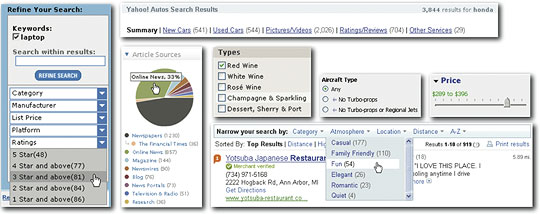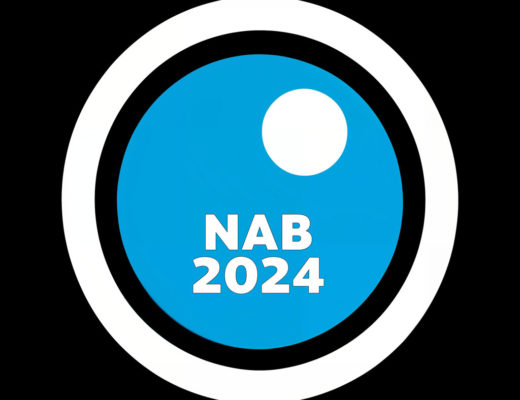A List Apart: Articles: Design Patterns: Faceted Navigation.
Faceted Navigation
Also calledguided navigation andfaceted search, the faceted navigation model leverages metadata fields and values to provide users with visible options for clarifying and refining queries. Faceted navigation is arguably the most significant search innovation of the past decade.[2] It features an integrated, incremental search and browse experience that lets users begin with a classic keyword search and then scan a list of results. It also serves up a custom map (usually to the left of results) that provides insights into the content and its organization and offers a variety of useful next steps. That’s where faceted navigation proves its power. In keeping with the principles of progressive disclosure and incremental construction, users can formulate the equivalent of a sophisticated Boolean query by taking a series of small, simple steps. Faceted navigation addresses the universal need to narrow. Consequently, this pattern has become nearly ubiquitous in e-commerce, given the availability of structured metadata and the clear business value of improving product findability. Faceted navigation is being deployed rapidly across an impressively wide variety of contexts and platforms. In the world of search, faceted navigation is everywhere.

Figure 4-19 illustrates a successful implementation of faceted navigation as a model for interacting with the catalogs of several academic libraries. This is a good example of a federated search in which source (roughly equivalent to location) is deemphasized relative to subject and format. The consortium’s goal is to connect students and faculty with the best materials, regardless of which university owns them. This example also hints at the design challenges. Faceted navigation is not simply a feature to check off a list. Success requires painstaking attention to detail and an appreciation for the vast array of possibilities for interaction design. For instance, the libraries run collapsible facets down the left. Only the most relevant facets (subject, format, location) are open. Most are closed by default. Each open facet reveals only the top four or five most heavily populated values. This allows for a small facet footprint that frees up plenty of space on the main stage for the results themselves. The number of matching results for each value (shown within parentheses) is a key element of the map, as is the reformulation of search terms and selected values as stacking breadcrumbs, which let users view and modify their current search parameters. This interface is the result of user research, usability testing, and iterative design. But it’s not the only way.
Continues @http://www.alistapart.com
Related articles by Zemanta
- Design Patterns for Mobile Faceted Search: Part I (tc.eserver.org)
- Endeca Moves toward Video Search (arnoldit.com)

Filmtools
Filmmakers go-to destination for pre-production, production & post production equipment!
Shop Now
![Design Patterns: Faceted Navigation 6 Reblog this post [with Zemanta]](http://img.zemanta.com/reblog_c.png?x-id=72a345ab-435e-4dad-882c-28f3d308c84b)













